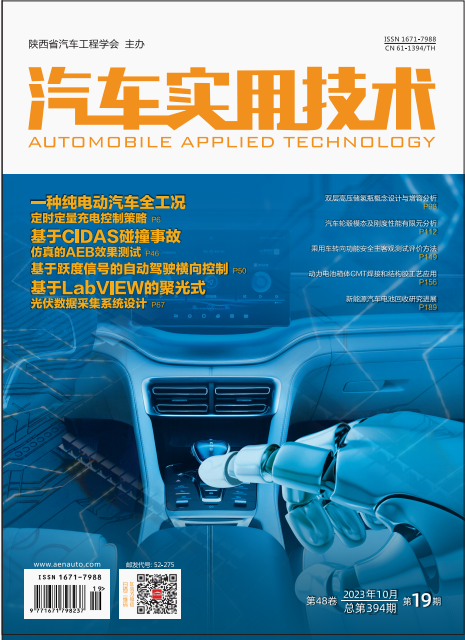|
|
Cause Analysis and Improvement Measures for Excessive Temperature of Coat
and Cap Rack in Exposure Test of a Certain Car
WEN Yunxiong
2023, 48(19):
144-148.
DOI: 10.16638/j.cnki.1671-7988.2023.019.028
Based on the phenomenon that the temperature of coat and cap rack is too high in a vehicle
during the vehicle exposure test, the influence of different assembly angles of the rear windshield,
different materials of the rear windshield and different fabric materials of the coat and cap rack on the
surface temperature of coat and cap rack is compared through the test data, and the related factors that
lead to the excessive temperature of coat and cap rack in the test process are determined, and the
corresponding solutions are proposed. It provides data reference for the improvement of vehicle
design. The results show that during the test, the sun position shifted to the north and the sunlight
directly hit the rear windshield, and the sun height angle at noon in low latitude areas is approxi-mately vertical, while the strong sunlight at noon had more severe effects on the rear windshield, coat
and cap rack and other components tending to the horizontal angle. The poor light penetration
performance of the rear windshield and the rapid heat accumulation and slow heat dissipation of the
flannel fabric are the fundamental reasons for the excessively high temperature of the coat and cap
rack. In serious cases, the coat and cap rack will have defects such as deformation, bulging,
whitening, degumming and delamination, and the abnormal failure of the coat and cap rack may also
be caused under the high temperature for a long time. The surface temperature of the coat and cap
rack can be effectively reduced by improving the assembly angle of the rear windshield, selecting the
rear windshield with high temperature resistance and sunscreen, and changing the fabric material of
the coat and cap rack.
References |
Related Articles |
Metrics
|

